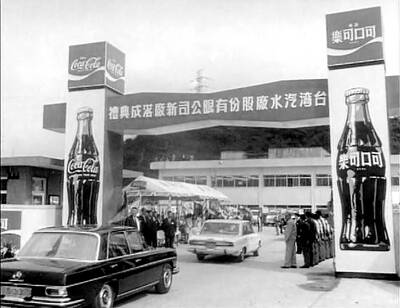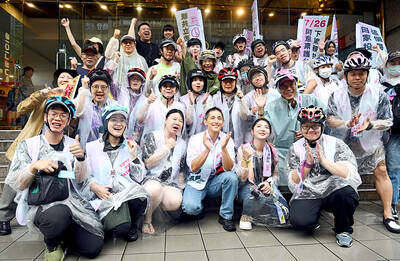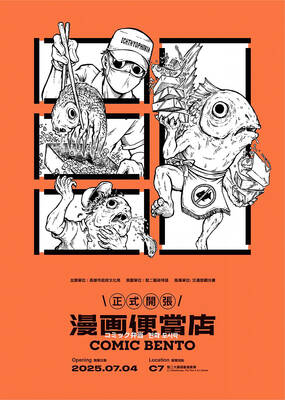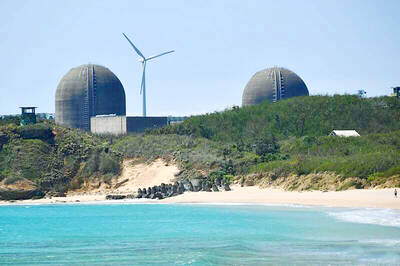For years Boracay was one of the Philippines and Asia’s best-kept travel secrets.
The secret eventually got out and now the island is well and truly developed, with its once-deserted shores host to a championship golf course, dozens of upscale resort hotels and, much to the horror of Boracay pioneers, an open-air shopping mall.
A quiet, idyllic hideaway it may no longer be, but the development means that this still-beautiful island now offers something for everyone, and this is reflected in the wide variety of clientele — families, couples, wealthy Filipinos, Koreans, Taiwanese and backpackers — who can be seen strolling along the beachfront.
In spite of the huge influx of tourists, Boracay has managed to preserve what attracted people in the first place, its crystal clear, azure waters and the pristine nature of its centerpiece, White Beach — the secret lies in the dozens of workers who sweep along its 5km of caster sugar-like sand early each morning picking up the assorted flotsam and jetsam.
Known as “Long Beach Island” (長灘島) in Mandarin, Boracay is an ideal getaway for residents of Taiwan, lying just over two hours’ flight time from Taipei.
Boracay is just 7km long, so it is impossible to get lost. White Beach is the center of most activity and is divided from north to south into three boat stations. Most of the shops, bars and restaurants are congregated around D’Mall, the open-air shopping mall, between stations two and three near the southern end.
Tourist seasons are dictated by the wind. In high season from October to May, the wind blows in from the east and White Beach is sheltered.
From June through October the wind changes direction, and White Beach is blighted by strong monsoon winds that bring frequent rainstorms and the occasional typhoon.
Beachfront hotels and bars counter this by erecting large bamboo screens, which may make for ugly photos, but provide welcome relief.
This presents people planning a Boracay adventure with a stark choice. Choose high season when the weather is more agreeable and battle the crowds, or low season when things are much quieter, but the weather is less predictable.
We went low and got lucky. It rained the whole week before our arrival but was sunny and dry during our five-day stay.
The year-round wind makes Boracay an ideal location for watersports, and the adventurous can try their hand at a whole range of activities, from the ubiquitous banana boat rides to parasailing and kiteboarding (surfing while holding a mini parachute canopy).
Other less strenuous activities include skimboarding (a kind of surfing along the shoreline), while pleasant three-hour, around-the-island boat trips to snorkeling spots and the gorgeous Puka Beach are also popular.
You don’t even have to worry about arranging things, as there are friendly, not-too-pushy touts hanging around waiting to satisfy your every request.
After a busy day on the water you will probably be hankering for some sustenance, and, again, Boracay doesn’t disappoint.
The area around D’Mall has a proliferation of restaurants where you can find just about any cuisine you fancy, from Cuban and Japanese to Italian and Mongolian.
Two of the most popular places are Cyma (above average Greek food, just don’t expect an authentic “Greek” salad) and Aria (respectable Italian cuisine).
A meal for three (with drinks) at either will set you back around 2,000 pesos (US$43), but there are plenty of other good places where you can eat for less, including an array of 250-pesos-per-head, all-you-can-eat barbecues.
Boracay is also famous for its fruit shakes, in particular the mango variety. You can buy them just about anywhere, but Jonas Fruitshake, situated on the beachfront about a 10-minute walk north of the mall, seems to hold the unofficial title of “King of Shakes.” The extensive menu features just about every flavor combination you could imagine. Mango shakes sell out quickly, so I had to be content with a banana, coffee and peanut creation. It did not disappoint.
The good news for those on a low budget is that Boracay hasn’t thrown off its backpacking roots altogether, as there is still a lot of inexpensive accommodation available. On the beachfront you can get an air-conditioned room for around 1,500 pesos (US$32) per night in low season, less if you’re prepared to barter. Just look for the signs.
At the other end of the scale and the choice for those wanting the utmost in luxury is Discovery Shores. An attractively low-key five-star hotel complex located at the quieter northern side of White Beach, it is far enough away, but not too far, from the hustle and bustle of the main drag. It is a perfect place to spend a few days unwinding while enjoying the kind of pampering that comes with five-star prices.
Discovery Shores is home to a branch of a Boracay institution, the Mandala Spa, where one can lose oneself in a range of luxurious body treatments. Be warned, the list prices don’t include 12 percent value-added tax (VAT) and a 10 percent service charge, and nothing is guaranteed to snap you out of your spa-induced coma and spoil your relaxed holiday mood more than a bill almost a quarter more expensive than you originally bargained for.

July 28 to Aug. 3 Former president Chiang Kai-shek (蔣介石) reportedly maintained a simple diet and preferred to drink warm water — but one indulgence he enjoyed was a banned drink: Coca-Cola. Although a Coca-Cola plant was built in Taiwan in 1957, It was only allowed to sell to the US military and other American agencies. However, Chiang’s aides recall procuring the soft drink at US military exchange stores, and there’s also records of the Presidential Office ordering in bulk from Hong Kong. By the 1960s, it wasn’t difficult for those with means or connections to obtain Coca-Cola from the

Taiwan is today going to participate in a world-first experiment in democracy. Twenty-four Chinese Nationalist Party (KMT) lawmakers will face a recall vote, with the results determining if they keep their jobs. Some recalls look safe for the incumbents, other lawmakers appear heading for a fall and many could go either way. Predictions on the outcome vary widely, which is unsurprising — this is the first time worldwide a mass recall has ever been attempted at the national level. Even meteorologists are unclear what will happen. As this paper reported, the interactions between tropical storms Francisco and Com-May could lead to

It looks like a restaurant — but it’s food for the mind. Kaohsiung’s Pier-2 Art Center is currently hosting Comic Bento (漫畫便當店), an immersive and quirky exhibition that spotlights Taiwanese comic and animation artists. The entire show is designed like a playful bento shop, where books, plushies and installations are laid out like food offerings — with a much deeper cultural bite. Visitors first enter what looks like a self-service restaurant. Comics, toys and merchandise are displayed buffet-style in trays typically used for lunch servings. Posters on the walls present each comic as a nutritional label for the stories and an ingredient

A couple of weeks ago the parties aligned with the People’s Republic of China (PRC), the Chinese Nationalist Party (KMT) and the Taiwan People’s Party (TPP), voted in the legislature to eliminate the subsidy that enables Taiwan Power Co (Taipower) to keep up with its burgeoning debt, and instead pay for universal cash handouts worth NT$10,000. The subsidy would have been NT$100 billion, while the cash handout had a budget of NT$235 billion. The bill mandates that the cash payments must be completed by Oct. 31 of this year. The changes were part of the overall NT$545 billion budget approved